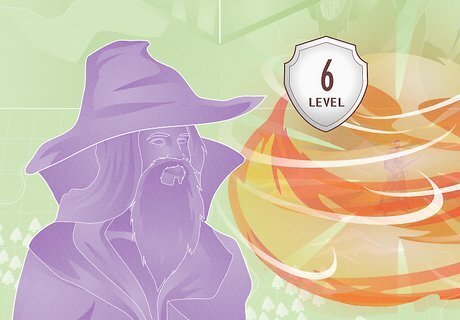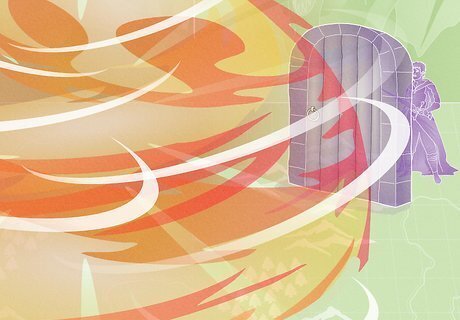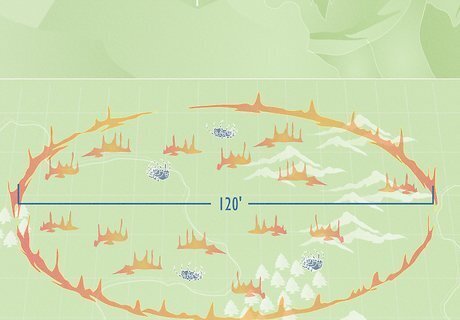
views
- Circle of Death creates a sphere of negative energy in a 60-foot radius, and it can be centered on any point within 120 feet of the caster.
- Creatures in the spell’s radius must make a Constitution saving throw. If they fail, they take 8d6 points of damage; if they succeed, they take half of that.
- Circle of Death isn’t as effective as other spells because it’s level 6 but deals the same damage as some level 3 spells (like Fireball and Lightning Bolt).
Circle of Death 5e Overview

Circle of Death is a 6th-level necromancy spell in D&D 5e. Upon casting Circle of Death, you create a sphere of negative energy with a 60-foot radius (centered on a point within the spell’s range). Every creature caught in the sphere’s radius must make a Constitution (CON) saving throw, taking 8d6 necrotic damage on a failed save or half damage on a success. Range: 150 feet Casting time: 1 action Target: A point within range Components: Verbal, somatic, and material (the powder of a crushed black pearl worth at least 500 gold) Duration: Instantaneous Which classes can cast it? Sorcerers, wizards, and warlocks
How does the Circle of Death spell work?

You can cast Circle of Death at level 6 and above. Since Circle of Death is a level 6 spell, your character must have at least 1 level 6 spell slot to cast it. However, if you have higher-level spell slots (levels 7, 8, or 9), you can also use those to cast the spell and increase its damage by 2d6 per spell slot level. Casting the spell at higher levels still requires targets to make a CON save (and they still take half damage if they succeed). CON saves measure a creature’s ability to resist a harmful effect using their vitality and hardiness.

The spell doesn’t reach creatures behind walls or around corners. Based on 5e rules, areas can only be included in a spell’s radius if you can draw a straight, unbroken line from the spell’s point of origin to that area. So, a shielded area (by a wall, door, or even a large piece of furniture) can’t be touched by Circle of Death. For example, say you cast Circle of Death, and one enemy is hiding behind a wall when the spell goes off. Even if the area behind the wall is technically within the spell’s 60-foot radius, the spell wouldn’t affect the hidden enemy.

Circle of Death may not always work on the undead. While there aren’t any undead creatures with resistance to Circle of Death specifically, some are resistant or immune to necrotic damage. All undead with necrotic resistance will take half damage, and those with immunity won’t take any. Undead immune to necrotic damage include: Death Knights Ghosts Mummies Shadows Demiliches Undead resistant to necrotic damage include: Liches Vampires Wights Dracoliches
Is Circle of Death a good spell?

Circle of Death can be deadly, but its damage output is relatively low. This spell is effective against weak enemies with low hit points (HP). On the other hand, since it only does 8d6 damage (which is the same as some 3rd-level area-of-effect spells), its damage output isn’t often worth the price of casting it against more powerful enemies. 8d6 hit points means Circle of Death deals, on average, 28 points of damage per casting. However, Circle of Death is a 6th-level spell that costs 500 gp (from the pearl dust) to cast. Comparatively, you could do the same damage in a smaller radius with a lower-level spell and save your 6th-level slot for something else.

Spells like Fireball and Otiluke’s Freezing Sphere outperform CoD. Fireball is a 3rd-level spell that also deals 8d6 points of damage, although its damage radius is smaller. Otiluke’s Freezing Sphere is another 6th-level spell with a 60-foot radius, but it does 10d6 points of cold damage and has a range of 300 feet. Even at higher levels, adding an extra 2d6 per level, Circle of Death rarely functions better than other spells. For example, it deals 14d6 damage at level 9—but a level 9 spell like Meteor Swarm does a whopping 20d6 fire and 20d6 bludgeoning damage.

Circle of Death has a massive radius and a rarer damage type. For all its inconveniences, Circle of Death has an unusually wide radius (60 feet, which means it has a 120-foot diameter). Comparatively, many other spells have a smaller radius—like Fireball with a radius of 20 feet or Arms of Hadar with a radius of 10 feet. In addition, it’s less common for creatures to have resistance or immunity to necrotic damage. The only creatures in D&D that often have resistance to necrotic damage are undead. Beyond that, it’s much more common for creatures to be resistant to elemental damage (like fire, cold, or lightning).

Casters high in the initiative order can get the best use from this spell. Circle of Death doesn’t make exceptions for allies—so if you cast it while an ally is within the spell’s radius, they’ll also take damage. Try using it early in the initiative order, before allies have a chance to get within close range of enemies. Initiative determines the order in which all creatures move and take turns in combat. Being high in the initiative order means you act before others have the chance to. Thus, when you have a high initiative, you can catch enemies in the spell’s radius before allies move in to attack.
Circle of Death for DMs

Use Circle of Death as the plot hook for a high-stakes quest. Even if it isn’t as effective as other spells, Circle of Death is still an interesting concept—and because it devastates creatures with low HP, you can use it as a DM to create a major threat for players to deal with. Give the spell to a powerful foe and have players race to stop them from casting it! For example, if the party uncovers a powerful necromancer’s plot to disrupt a festival by casting Circle of Death, you could design a quest that involves searching the festival and investigating leads until the party finds the necromancer and defeats them.
















Comments
0 comment